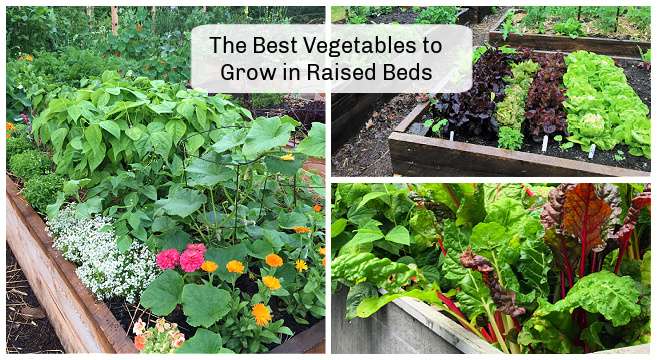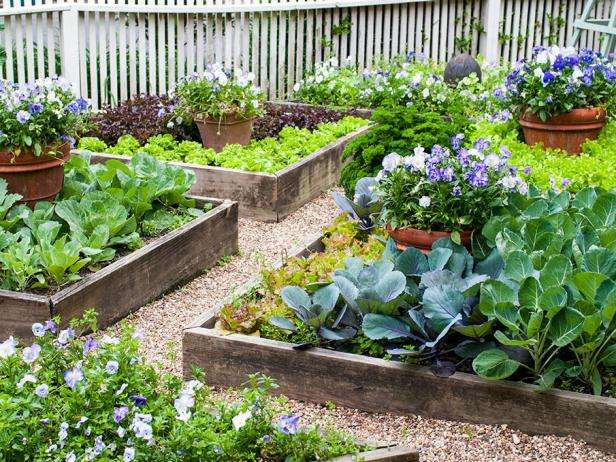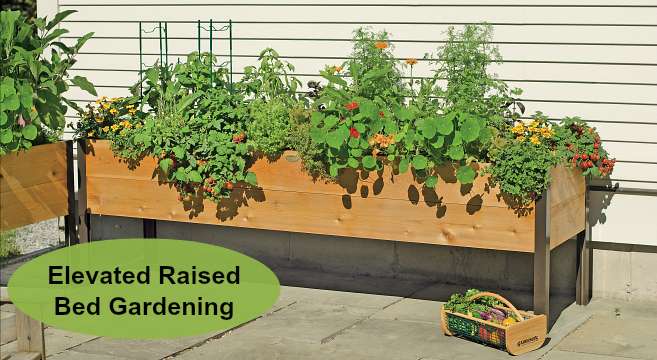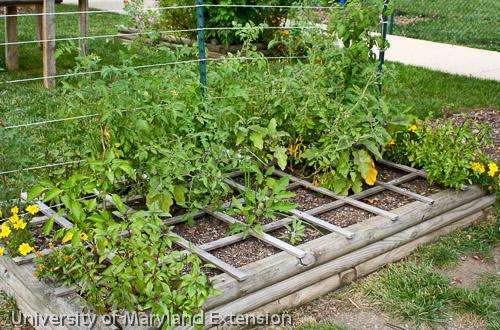Wouldn’t it be great to have your very own vegetable garden? If you’re considering using raised garden beds, you might be wondering if they are safe for growing vegetables. In this article, we’ll explore the topic of raised garden beds and discuss their safety when it comes to vegetable gardening. We’ll also touch on other related subjects, such as off-grid living and the benefits of gardening. Lastly, we’ll take a closer look at whether brick raised beds are safe for your vegetables. By the end of this article, you’ll have a better understanding of the safety and advantages of using raised garden beds for your vegetable garden.
Are raised garden beds safe for growing vegetables?
Introduction to raised garden beds
Raised garden beds have become increasingly popular among gardeners of all levels due to their many advantages. These elevated planters provide numerous benefits, such as improved soil quality, better weed and pest control, and easier access for gardening tasks. However, when it comes to growing vegetables, safety should always be a top priority. In this article, we will explore the safety considerations of raised garden beds and help you make informed decisions about the materials and practices you use in your own garden.
Advantages of raised garden beds
Before delving into the safety aspects, let’s first discuss the advantages of using raised garden beds for vegetable cultivation. These benefits contribute to the increasing popularity of this gardening method.
One significant advantage is the improved soil quality and drainage that raised beds offer. The soil in raised beds is typically looser and better-draining compared to traditional garden plots, allowing for optimal root development and nutrient uptake by the plants.
Raised garden beds also provide better control over weeds and pests. The raised height makes it more difficult for weed seeds to infiltrate the bed, and the physical barrier can deter many pests and animals from accessing your vegetables.
Another advantage is the ease of access that raised garden beds provide. The elevated height reduces the need for excessive bending or kneeling, making gardening tasks more comfortable and accessible, especially for individuals with physical limitations.
Lastly, raised beds often have an extended growing season. The soil in these beds tends to warm up more quickly in the spring, allowing for earlier planting, and the design of the beds can provide additional protection against frost or cold temperatures.

Disadvantages of raised garden beds
While raised garden beds offer numerous benefits, it is important to consider the potential disadvantages as well.
One of the primary concerns is the initial cost and setup of raised garden beds. Depending on the materials and dimensions you choose, the cost of building or purchasing raised beds can be higher compared to simply planting in the ground. Additionally, there may be a learning curve associated with properly constructing and maintaining raised beds.
Another drawback is the limited growing space in raised beds. The size and dimensions of the beds determine the amount of planting area available. If you have a large vegetable garden or plan to cultivate a significant variety of crops, you may need multiple raised beds, which can take up more space in your yard.
Raised garden beds also have a higher risk of drying out quickly. Due to their elevated design, they may require more frequent watering, especially during hot summer months. It is essential to monitor soil moisture levels regularly to prevent your vegetables from drying out.
Lastly, the limited root depth in raised beds may not be suitable for some plants. Certain vegetables, such as carrots or potatoes, require a deeper root system to develop properly. It is important to consider the specific needs of your vegetables when deciding whether raised beds are the right choice for your garden.
Choosing safe materials for raised garden beds
When it comes to safety in raised garden beds, one of the primary considerations is the materials used to construct them. Selecting the right materials will help ensure that your vegetables are not exposed to harmful substances or contaminants.
There are various material options for raised beds, including wood, plastic, metal, and even bricks. Each material has its benefits and potential risks, which we will explore further in the following sections.
When choosing materials, it is important to consider their environmental impact. Look for sustainable options that are sourced responsibly and have minimal negative effects on the ecosystem. Avoid materials that may contain toxic chemicals, such as pressure-treated wood or plastic treated with harmful additives.

Potential risks of using certain materials
While raised beds made from certain materials may be convenient or visually appealing, they can pose potential risks to the safety of your vegetables and also your own health.
Pressure-treated wood, commonly used in construction, may contain chemicals like arsenic and formaldehyde, which can leach into the soil and be absorbed by the vegetables. These chemicals can be harmful if ingested over time. If you decide to use pressure-treated wood, it is crucial to employ protective measures, such as lining the inside of the bed with a barrier, to prevent direct contact between the soil and the wood.
Plastic and synthetic materials, such as PVC, can also be problematic. They may release toxic chemicals when exposed to heat or sunlight, which can then contaminate the soil and ultimately affect the safety of your vegetables. It is best to avoid using these materials altogether in raised garden beds.
Metal options, such as galvanized steel or aluminum, can pose risks due to the potential leaching of heavy metals into the soil. While the levels are generally low, it is advisable to choose metals that are food-safe and consider adding a protective barrier, such as wrapping the bed with a geotextile fabric, to minimize direct contact between the soil and the metal.
Benefits of using organic materials
To ensure the safety of your vegetables, it is recommended to use organic and natural materials for constructing raised garden beds. Organic options, such as cedar and redwood, are naturally resistant to decay and do not contain harmful chemicals that can leach into the soil.
Using organic materials has numerous benefits beyond safety. Cedar and redwood, for example, are naturally resistant to pests and decay, which extends the lifespan of the raised bed. These woods also have a pleasant aroma and add beauty to your garden.
Organic materials contribute to a healthier soil ecosystem as well. They decompose over time, enhancing the organic matter content of the soil, improving water retention, and providing essential nutrients for your plants.

Are brick raised garden beds safe?
Brick raised garden beds are a popular choice among gardeners, but concerns about their safety often arise. Let’s address some common misconceptions and evaluate the safety of different brick types.
Bricks are generally considered safe for raised garden beds when properly installed and maintained. The concern with bricks lies in the potential leaching of lime and other alkaline compounds into the soil, which can affect the pH levels and nutrient availability for the plants.
However, the majority of bricks available today are fired at high temperatures and do not pose a significant risk of leaching. It is crucial to consider the type and quality of the bricks you intend to use. Avoid using old, salvaged bricks that may contain mortar residues or have been treated with harmful substances.
To prevent leaching, you can line the inside of the brick bed with a barrier, such as geotextile fabric or food-grade polyethylene. This will create a separation between the bricks and the soil, minimizing any potential interactions between the two.
Understanding the safety of pressure-treated wood
Pressure-treated wood is a common material used for construction purposes, but its safety in raised garden beds has been a subject of debate. Let’s shed light on the subject and help you make an informed decision.
Pressure-treated wood is infused with chemicals, primarily copper-based compounds, to increase its resistance to rot and insect damage. Historically, these treatments included arsenic, which posed significant health risks. However, since the early 2000s, residential pressure-treated wood has transitioned to safer alternatives.
The current copper-based treatments used in pressure-treated wood are generally considered safe for gardening purposes. The levels of copper that leach into the soil are minimal and are unlikely to have significant impacts on vegetable safety or human health.
To further ensure safety, you can line the interior of the bed with a barrier, such as a thick plastic liner, to minimize any direct contact between the soil and the treated wood. This precautionary measure serves as an extra safeguard against any potential leaching.

Alternative materials for raised garden beds
If you prefer to avoid any potential risks associated with certain materials, there are alternative options available for constructing raised garden beds.
Composite wood is a popular alternative to traditional lumber. It is made from a combination of wood fibers and recycled plastic, making it durable, long-lasting, and resistant to rotting or warping. Composite wood does not leach harmful chemicals into the soil and provides a safe and reliable option for constructing raised beds.
Concrete blocks are another viable alternative. They are readily available, affordable, and provide excellent durability. Concrete blocks offer ample growing space, and their thermal mass can help regulate soil temperature. However, keep in mind that concrete blocks may require additional sealing to prevent moisture absorption and potential leaching of alkaline substances.
Natural stone, such as limestone or granite, can also be used as an alternative material. Stone beds are aesthetically pleasing, durable, and do not pose the risks associated with some other materials. However, it is important to ensure that the stones you choose do not contain harmful additives or contaminants.
Preventing contamination in raised garden beds
Ensuring the safety of your vegetables goes beyond the materials used to construct your raised beds. It is important to establish proper practices to prevent contamination in the soil and potential harm to your plants.
One of the best practices for minimizing soil contamination is to avoid using potentially contaminated soil. If you plan to fill your raised beds with soil from your property, ensure that it is free from any potential contaminants, such as lead or chemical residues.
If you are unsure about the soil’s quality, it is recommended to use fresh, uncontaminated soil or a high-quality planting mix specifically formulated for vegetable gardening. These products typically have appropriate nutrient levels and are free from harmful substances.
To maintain your soil’s safety, it is crucial to implement organic pest and weed control methods. Avoid using synthetic herbicides or pesticides that can leave residues in the soil. Instead, opt for organic alternatives, such as neem oil or companion planting, to naturally control pests and weeds.

Proper soil preparation for safe vegetable growth
Creating a safe environment for your vegetable plants starts with proper soil preparation. Soil composition plays a crucial role in the health and safety of your plants. Here are some important factors to consider:
Soil nutrients: Determine the nutrient levels in your soil and amend it accordingly. A soil test can help identify any deficiencies or imbalances, allowing you to add appropriate organic fertilizers or amendments to achieve optimal nutrient levels.
Soil pH: Test the pH of your soil to ensure it falls within the ideal range for vegetable growth. Most vegetables prefer a slightly acidic to neutral pH range. If your soil is too acidic or alkaline, you can adjust it by adding organic materials, such as compost or peat moss, to bring it into the desired range.
Soil structure: Proper soil structure promotes root development, water drainage, and aeration. Avoid compacted soil, as it can hinder plant growth and contribute to poor drainage. Incorporating organic matter, such as compost or well-rotted manure, can improve soil structure and promote healthy vegetable growth.
Soil contamination: Be cautious of potential soil contamination, especially if you are using soil from an unknown source or have previously grown plants that may have been exposed to chemicals. Conduct soil tests for heavy metals and other contaminants, and take appropriate measures to remediate the soil if necessary.
By preparing your soil adequately and ensuring it is free from contaminants, you create an environment that fosters healthy vegetable growth and minimizes safety risks.
Common plant diseases and pests in raised garden beds
While raised garden beds offer some natural protection against pests and diseases, it is essential to be aware of common issues that can affect your vegetable plants.
Identifying and preventing common plant diseases is crucial for maintaining a healthy garden. Diseases such as powdery mildew, blight, and leaf spot can spread quickly and harm your vegetables. Implementing practices like crop rotation, proper spacing, and good airflow can help prevent the onset and spread of diseases.
Pests, such as aphids, slugs, and caterpillars, are common nuisances in vegetable gardens. Regularly inspect your plants and implement natural pest control methods, such as handpicking, using insecticidal soaps, or introducing beneficial insects like ladybugs or praying mantises. This reduces the need for chemical pesticides and keeps your vegetables safe for consumption.
Natural remedies, such as neem oil sprays or garlic-based insect repellents, can also help protect your vegetables from pests without introducing harmful chemicals into the garden.
Safe practices for watering and fertilizing in raised garden beds
Proper watering and fertilizing practices are essential for the health and safety of your vegetable plants in raised garden beds.
When watering, be mindful of the soil moisture levels in your beds. Raised beds tend to dry out more quickly than traditional garden plots due to their elevated design and better drainage capabilities. Regularly check the soil moisture, especially during hot weather, and ensure that it remains consistently moist. Adding a layer of mulch around your plants can help retain moisture and regulate soil temperature.
When fertilizing, choose organic options to promote optimal plant growth and avoid potential health risks. Organic fertilizers, such as compost, well-rotted manure, or fish emulsion, release nutrients slowly and provide a balanced diet for your vegetables. Dilute liquid fertilizers according to the package instructions and avoid over-fertilization, as this can lead to nutrient imbalances and potential plant health issues.
Always follow the recommended application rates and timing specified by the organic fertilizers you use. This helps maintain the safety of your vegetables and prevents the buildup of excess nutrients in the soil, which can lead to environmental issues.
Conclusion
Raised garden beds offer numerous benefits for vegetable cultivation, from improved soil quality to better control over pests and weeds. However, it is important to prioritize safety when selecting materials and implementing practices in your raised beds.
Choosing safe materials, such as organic options like cedar or composite wood, helps ensure that your vegetables are not exposed to harmful substances. Taking measures to prevent contamination, properly preparing the soil, and implementing organic pest and weed control methods further enhance the safety of your raised garden beds.
By considering the safety considerations outlined in this article and following best practices for vegetable cultivation, you can enjoy the benefits of raised garden beds while fostering a safe and sustainable environment for growing delicious and healthy produce.




